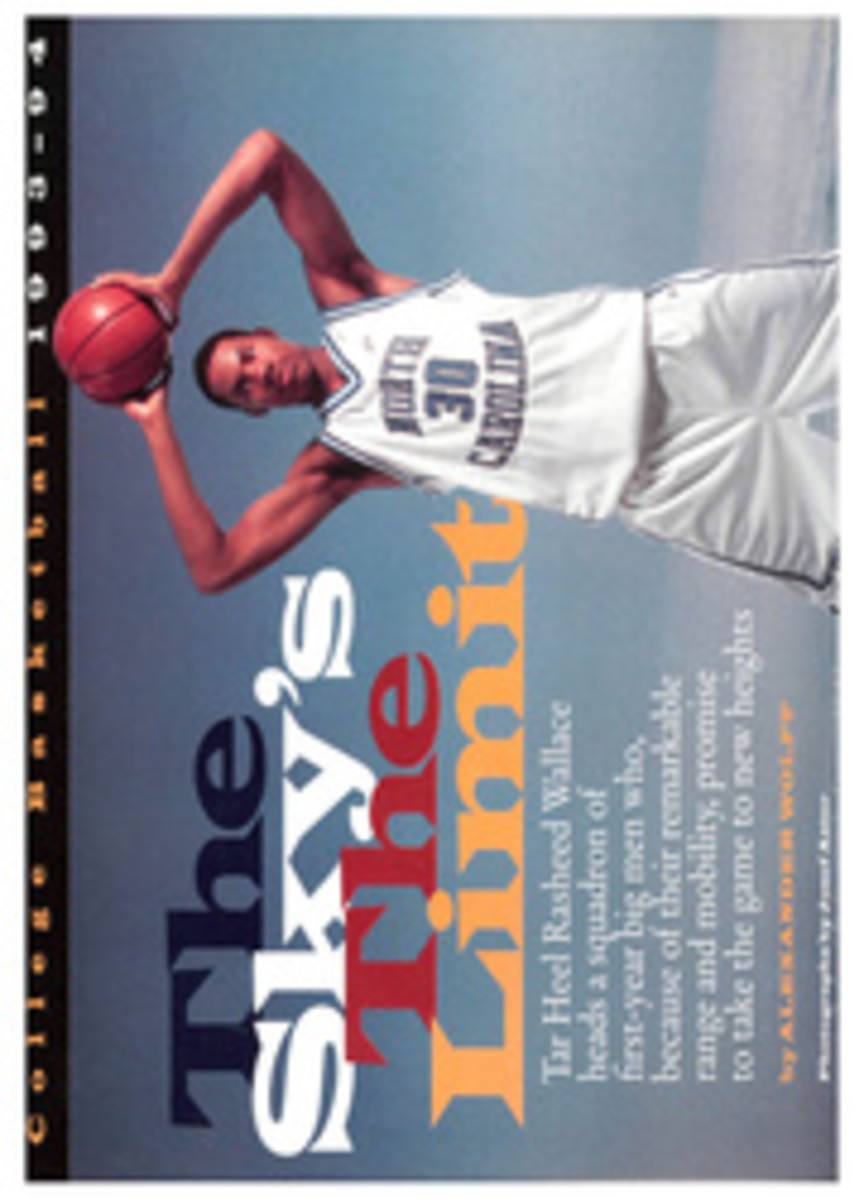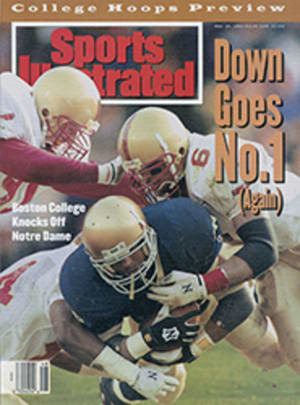
Where the Buffalo Roam
You have to feel for Bob Lantis. Born in the wrong century, he's a buckaroo trapped in the body of a traveling salesman. In his spare time he dons a 10-gallon hat, strums a guitar and sings of dogies, broncos and bison. "I've been a chaser of buffalo in my mind for years," he says.
Yet for a glorious moment early each fall, Lantis, 58, chases bison, a.k.a. the North American buffalo, for real. That's when he joins about 30 other cowboys and wild West wannabes who saddle up for the annual bison roundup in Custer State Park in South Dakota's Black Hills. Part work, part fun, part fantasy, the roundup combines many of the West's most potent symbols—cowboys, horses, buffalo and the wide-open prairie.
It's clear why the Sioux consider the Black Mills sacred ground. With its rugged mountains, pine-covered hills and rolling prairie, Custer State Park is a haven for wildlife. Its bison herd is among the largest public herds in existence, numbering about 1,500 after calves are born in the spring. But like most herds, Custer's bison are confined because nearby ranchers don't take to roving bands of one-ton animals that tear down their fences and mingle with their cattle. Each year as the herd outgrows its 30,000-acre range, the park enlists 30 horseback riders who help round up bison and cull roughly 325 surplus animals. These are sold to ranchers who are establishing their own herds as well as to those who raise bison for their meat and hides. A two-year-old bull fetches about $1,200 at a late-fall auction that supplies a quarter of the park's annual operating budget.
The roundup, an event once attended only by park personnel and a handful of outside cowhands, has grown into a celebration of Americana. The park must sort through applications from more than 100 would-be buckaroos to pick the lucky winners. Even South Dakota governor Walter Miller hops on a horse to help out.
"It's getting bigger every year," says Craig Pugsley, the park's visitor service coordinator. To make things more exciting, before the roundup begins park staffers push the herd down toward the corrals, into a more manageable area of 2,000 acres. "We used to round them up in this whole eight-mile area, and what would happen is that folks would come out and sit for six hours and never see anything," Pugsley says. "Now people get to see the work of two or three weeks unfold in front of them in two or three hours."
On Sunday cowhands begin to arrive, and park staffers drive 10 to 15 pickup trucks into the horse camp. That afternoon hundreds of park visitors gather for a chili feed and cook-off at the park's Blue Bell Lodge. In the evening riders gather around a campfire at which Lantis holds center stage, playing a guitar and reciting cowboy poems, with a thousand stars overhead and a full moon rising over a gurgling stream.
The men and women who will ride the next day come from far and wide. Larry Thompson, 60, a retired hospital administrator who breaks horses, hails from Lame Deer, Mont. He imagines his great-grandfather clutching a bow and arrow and riding bareback through a sea of bison. "My ancestors did this," says Thompson, a Lower Brulè Sioux. "I figure what goes around comes around, and now I'm having a chance to do it."
Louie Larson, 50, who works for a horse trader near Minneapolis, is riding in his first roundup, though he has come to Custer for more than 30 years. "It's something I've wanted to do ever since I was a little boy," he says. "Once you get in there and the buffalo are running, you'll know exactly what I'm talking about."
"You get into this thing, and it just grows on you," says Lantis. In his day job Lantis, from Rapid City, S.Dak., peddles cleaning chemicals to schools and hospitals. On the side he's a wilderness outfitter, taking hunters and tourists into the backcountry. "You anticipate all year long four hours of riding," he says of the roundup. "We ride further than that going up to hunting camp, but it isn't with nearly the anticipation we have for a roundup. I think part of it is the chase factor. I always say, deep down in my heart I'm hoping them mothers run like hell."
By 7:30 a.m. on Monday, hundreds of spectators have gathered on the ridge above the corrals. By the chutes and fences, riders and park workers receive last-minute instructions from Ron Walker, the park's resource program manager. Stick together, he warns: "We don't want any Lone Rangers down there."
The meeting breaks up to the jingle of spurs and the crunch of gravel under boots. The pickups file through Movie Draw, the setting for the 1956 film The Last Hunt and the bison stampede in 1962's How the West Was Won, and spread out at the far end of the valley. The riders, meanwhile, split into three teams, flushing stragglers from steep ravines and the green ash in the creek bottom. These modern-day cowboys communicate with the pickup drivers by two-way radios. One cowpoke even has a TV network's compact video camera duct-taped to his hat.
As the riders work the flanks of the herd, trucks buck over the rocky ground, pushing the herd down the valley. With their huge heads and high humps, the buffalo look as if they're about to tip forward. Yet they run with astounding speed and agility. "They just kind of float, don't they," says Doug Scott, a pickup driver. Affirming the comment, a running bull effortlessly pirouettes 360 degrees while keeping pace with the racing herd.
Thundering through a narrow pass toward the corrals, the 1,500 bison present a picture of the 19th century, when the animals, according to a zoologist of the time, were as plentiful as "fish in the sea," and a frontiersman reported traveling for three days against a river of bison that stretched to the horizon in all directions. But farmers shot the animals to save their fences, soldiers destroyed them to starve hostile Plains Indians, market hunters killed them for their meat and hides, and sportsmen shot them by the thousands for fun. By the turn of the century, as few as 1,000 remained.
Since then buffalo have come back from the brink of extinction. Today about 150,000 roam North America's grasslands. Public herds number about 17,000, and most of the others graze on private ranches, where landowners are discovering that wildlife conservation and profits can go hand in hand. Long adapted to the harsh climate and coarse grass of the Great Plains, the buffalo need little care. Yet prices for their meat and for breeding animals are twice as high as those for cattle.
The Custer herd lopes into the creek bottom near the last corral, followed by a storm of riders, trucks and dust. In the shelter of the cottonwoods, the herd splits and swirls like a whirlwind. A couple of animals squirt out past a truck. Instantly, dozens follow at a gallop.
"C'mon, push them," Scott yells in frustration from behind the wheel of his pickup. "Let them stand for a minute, they'll find a spot and go." A couple of trucks close the gap, forcing the whirling mass of bison back toward the corral. As the lead animals find the gate, the rest trot behind. At 9:40 a.m. the gate swings shut. Walker regroups the park staff to begin two days of branding and inoculating calves and drawing blood to test sale animals for disease.
The cowhands' work is done for another year. Lantis will return to sales and pack trips. The roundup was good, he says. "Real good. Too smooth. Kind of like it had milk-cow syndrome."
But you hear no complaint from Louie Larson, who's taking a breather in the back of a pickup. "Great, just great," he says. He pauses as if to reflect on the brown river of bison galloping under the blue prairie sky, and then smiles. "Better than great."
PHOTO
LAYNE KENNEDY
Once hunted nearly to extinction, buffalo are now about 150,000 strong in North America.
TWO PHOTOS
LAYNE KENNEDY
Lantis (top) kept track of the herd by radio; a car got stuck in an old-fashioned traffic jam.
Greg Breining, who lives in Minneapolis, has written several stories for Sports Illustrated.

